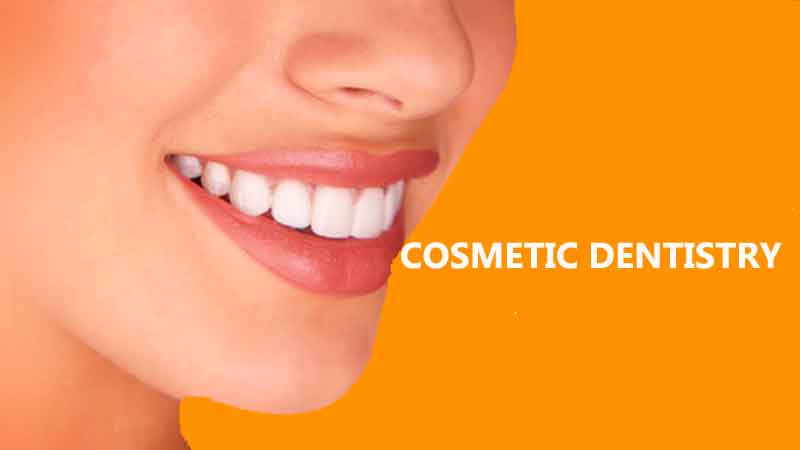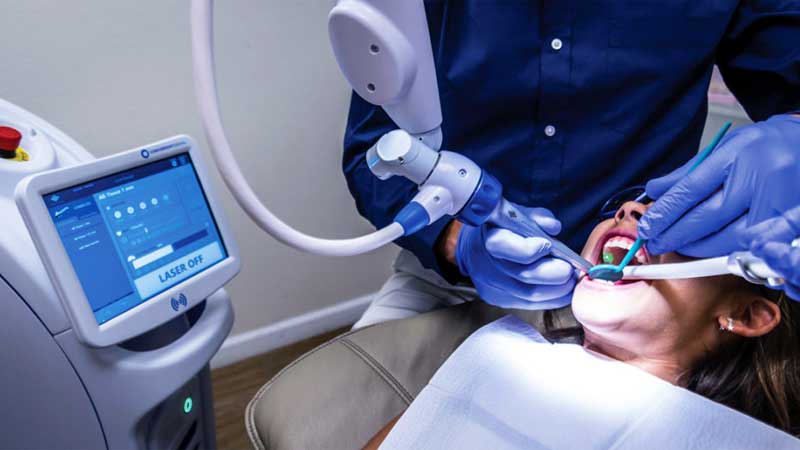
Everyone’s gumlines are different. Some are high, some are low, some are in between. Some may even be uneven. If you feel self-conscious about your gumline, there are ways to change it. Gum contouring, also known as gingival sculpting or gingivoplasty, is one of the options that can help reshape your gumline.
Gum contouring is used as a cosmetic dental procedure to correct an uneven gum line or a gummy smile and also a medical procedure for periodontal disease caused by gum inconsistencies like counter decay, tooth loss, and gingival infections. The process of gum contouring involves cutting away or removing excess gum tissue around your teeth. If you have gum recession, the procedure involves restoring gum tissue.
A Gummy Smile
A gummy smile is one that shows more of your gumline than you'd prefer. When you smile the natural amount of soft tissue seen is usually around two to three millimeters, If it exceeds four millimeters, this imbalance creates an undesirable perception of short and stubby teeth. There are a number of options available for correcting a gummy smile, including a gingivectomy, crown lengthening, orthognathic surgery, lip repositioning, and botox. The gum lift (gum contouring) by Laser dentistry has become quite popular, and it is a common procedure for a gummy smile. This procedure is effective if you have crooked gum lines that make your smile look misaligned or uneven.
Gummy Smile Correction Procedure
Before the procedure, our dentist will use a special pen to mark your gums and determine how much tissue will be removed or added and will show you what we plan to do before beginning the procedure to ensure you are happy with the results. The gums will be numbed with a local anesthetic and then use a traditional surgical scalpel or a soft-tissue laser or electrocautery to remove excess gum tissue. Sometimes, the bone at the front of the tooth's root must also be removed during gum contouring to get the best long-term results. The gum contouring appointment can last 15 to 30 minutes for the removal of a small amount of gum tissues, but it may last up to one or two hours for special cases like crown lengthening procedures involving bone and gum.
Post Care for Gum Contouring
Your gums and mouth will likely feel sensitive or tender at first, you’ll want to eat soft foods for about 2 to 3 days after the procedure. Antibiotic mouth rinse is prescribed to reduce the risk of infection. You are not likely to need any pain medications after receiving gum contouring and if needed only use the prescribed medicines from the dentist. Your pain will lessen day by day and you will be able to return to regular eating and oral hygiene habits. You may have to limit some activities for a day or two based on how you feel and any tenderness you may have. You’ll typically have a follow-up appointment a few days or a week after the procedure.
Recovery time can be from one week to ten days for simple gum contouring and up to six weeks if the bone structure was removed for crown lengthening. The longer you are able to rest, the faster your recovery process will be. For the first few days, avoid physical activities. You should also visit your dentist every six months for a routine teeth cleaning and dental exam.
For a couple of weeks after your gum contouring, it is important to be as gentle as possible when brushing and flossing to avoid bleeding. Using an alcohol-free mouthwash also recommended. A simple salt water (saline) solution rinse after meals is an ideal way to remove any lingering food particles and residue. You absolutely need to avoid spicy and crunchy food and any foods with small seeds that can get under the gum and cause irritation.
The results can last for decades if you take care of your teeth and gums. This includes brushing twice a day with fluoride toothpaste, flossing daily, and rinsing with mouthwash regularly. You should also visit your dentist every six months for a routine teeth cleaning and dental exam.
Gum Contouring Cost
The cost of gum contouring does vary for every individual, depending on the severity of the damage or the amount of tissue to be removed. A dental laser versus a surgical scalpel will affect the outcome as well. Treating a single tooth will cost significantly less than making alterations to the entire gum line. If you include any additional procedures with your gum contouring like veneers, cosmetic bonding, or crowns, then those additions will add to the total cost. Dental insurance does not typically cover gum contouring for cosmetic purposes. Contact us, we will be able to provide a detailed treatment plan to give you a better idea of your estimated cost so that you are well prepared.

